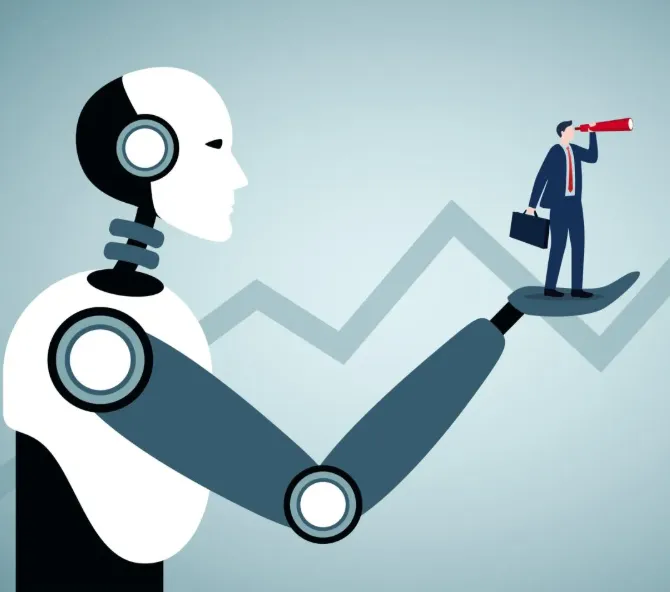The debate around artificial intelligence often gets framed as a battle between people and machines. But the real story isn’t about replacement—it’s about reinvention. AI isn’t eliminating workers; it’s dismantling outdated ways of working and forcing us to rethink what productivity and leadership truly mean.
Intelligence, Everywhere in the Organization
For decades, corporate structures followed a predictable pyramid: executives made decisions, frontline teams executed, and information trickled back up slowly. It was inefficient, but it worked well enough.
AI changes this dynamic. With decision-ready insights now available at every level, intelligence becomes distributed. Teams across functions can access pricing signals, customer trends, and risk alerts without waiting for approval from above. Managers no longer serve as bottlenecks—they become facilitators, ensuring people and machines work together effectively. The organizations that thrive will be the ones where strategy is co-created across the network, powered by both data and human judgment.
Judgment as the Critical Skill
When algorithms offer endless answers, the scarce resource becomes judgment. Every department is now equipped with its own models—marketing predictors, product copilots, HR planners—all drawing on different data. None of these systems take responsibility when things go wrong.
Leaders must develop new competencies: recognizing bias in data, interpreting probabilities rather than absolutes, and knowing when human intervention is essential. Success in this era won’t belong to the loudest executives but to those who can translate information into meaningful action and align machine output with human values.
Skills as Living Systems
The notion that machines “take jobs” oversimplifies reality. More often, roles disappear because people stop adapting before the technology arrives. Skills can no longer be treated as static qualifications; they function more like dynamic interfaces that evolve with tools and methods.
A marketer brainstorming with generative software, a recruiter using language models to assess candidates, or a supply chain analyst running probabilistic simulations—each example shows people amplified by AI, not replaced by it. The challenge lies in how quickly individuals and organizations can adapt.
Reskilling, therefore, can’t remain a side project for HR. It’s a strategic imperative. With nearly half of workplace skills projected to shift within five years, adaptability, analytical thinking, and tech literacy will define competitiveness.
Redefining Leadership
The definition of leadership has always evolved. In manufacturing, it was authority. In the knowledge economy, vision. In the AI-driven era, leadership becomes orchestration.
No executive can master every model or system. The role of leaders will be to build environments where the best solutions emerge—curating the right tools, setting clear goals, encouraging better questions, and ensuring accountability. True leadership will look less like command and more like conducting: guiding both people and machines to work in harmony.
A More Human Future of Work
Contrary to popular fears, AI is making work more human. By removing repetitive tasks, it highlights the uniquely human abilities—wisdom, empathy, contextual judgment, and moral responsibility.
But reaching that future requires more than technology. It demands cultural change, new metrics for value, and the courage to rethink outdated assumptions about hierarchy and productivity. AI won’t define the future alone; how we choose to integrate it will determine whether work becomes more meaningful or more mechanical.
The real disruption isn’t replacement—it’s redefinition. And that might be the greatest opportunity of all.







